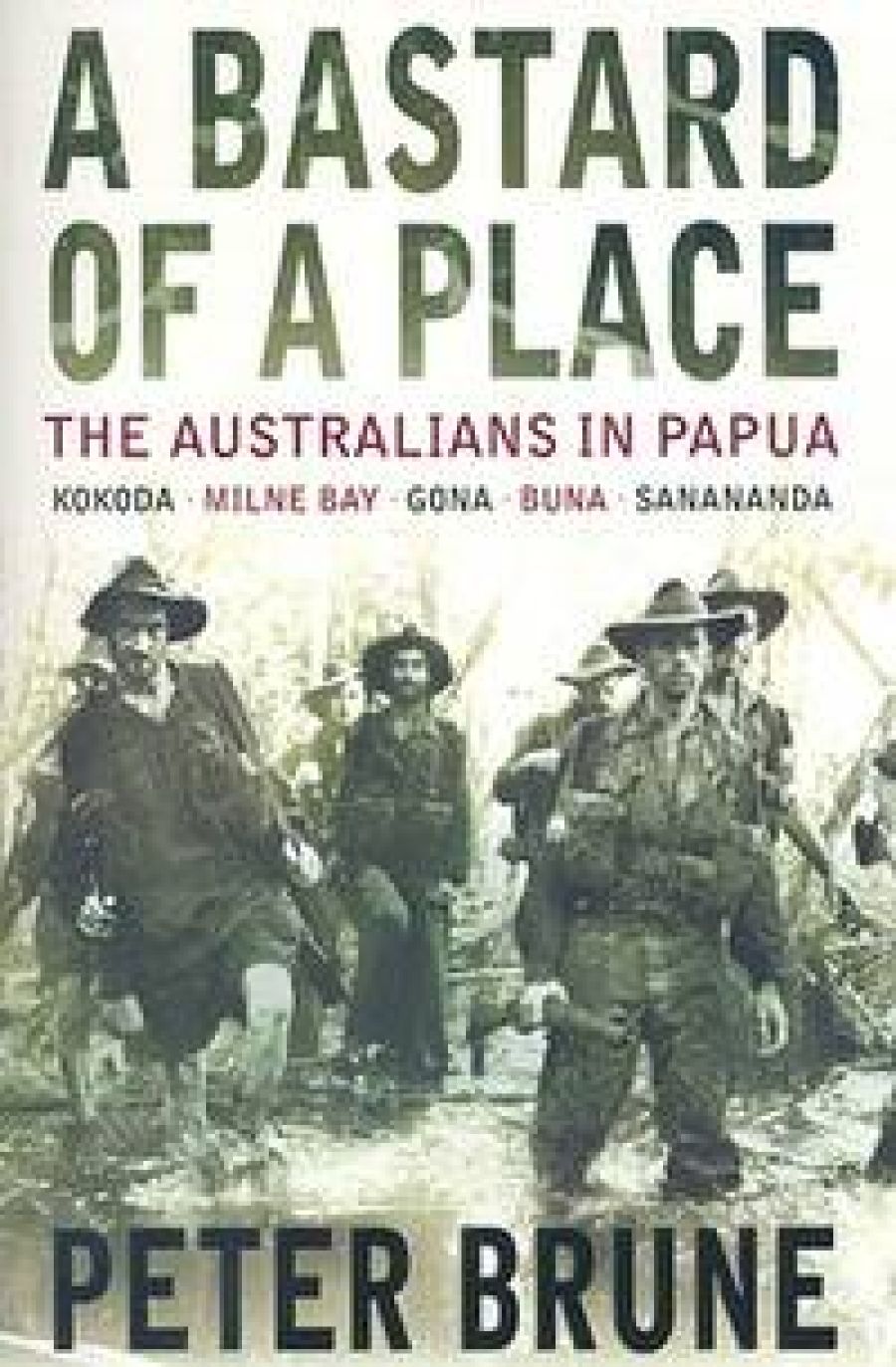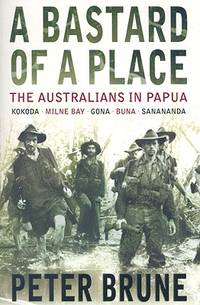
- Free Article: No
- Contents Category: Australian History
- Review Article: Yes
- Article Title: Kokoda Truths
- Online Only: No
- Custom Highlight Text:
Japanese troops landed and occupied Lae and Salamaua in north-eastern Papua on 8 March 1942. In an elaborate operation scheduled for early May, the Japanese planned a seaborne invasion of Port Moresby to safeguard their positions in New Guinea and in the Rabaul area, to provide a base that would bring northern Australia within range of their warships and bombers, and to secure the flank of their projected advance towards New Caledonia, Fiji and Samoa.
Countermoves by the US Navy defeated this attempt. Therefore, in June 1942, Lieutenant-General Harukichi Hyakutake’s XVII Army was ordered to gather its divisions from Davao in the Philippines, from Java and from Rabaul, and to prepare for a revised attack on Port Moresby. In a two-pronged approach, one Japanese group would take Milne Bay (south-eastern Papua) by an assault from the sea and advance on Port Moresby along the coast; the other would attack overland from Buna and Gona (northern Papua) along the Kokoda Trail.
- Book 1 Title: A Bastard of a Place
- Book 1 Subtitle: The Australians in Papua
- Book 1 Biblio: Allen & Unwin, $49.95 hb, 691 pp
- Book 1 Cover Small (400 x 600):

- Book 1 Cover (800 x 1200):

Countermoves by the US Navy defeated this attempt. Therefore, in June 1942, Lieutenant-General Harukichi Hyakutake’s XVII Army was ordered to gather its divisions from Davao in the Philippines, from Java and from Rabaul, and to prepare for a revised attack on Port Moresby. In a two-pronged approach, one Japanese group would take Milne Bay (south-eastern Papua) by an assault from the sea and advance on Port Moresby along the coast; the other would attack overland from Buna and Gona (northern Papua) along the Kokoda Trail.
Buna and Gona were occupied by the Japanese on July 21. Major-General Tomitaro Horii pushed the 13,500 men of his South Seas Force down towards Kokoda, encountering a forward screen of Australian troops on the way. The fighting was constant but scattered in guerilla-type skirmishes that took place in the wet jungle and long kunai grass.
By August 26 the Japanese were pressing on Isurava, about twelve kilometres south of Kokoda itself, which they had taken on July 29–30. Simultaneously, they launched their seaborne assault on Milne Bay, 350 kilometres to the east. That Horii’s troops had advanced only twelve kilometres in more than three weeks says as much about the terrain as it does about the undoubted courage of the defenders. The Kokoda Trail was and is a primitive foot track over the Owen Stanley Range. It is narrow. You slither down steep muddy slopes; you climb the Golden Stairs: several thousand pieces of wood pushed into the ascent and held in place by wooden pegs. Putrid mud constitutes the rest of the step, which in some cases is formed by an exposed tree root. It is a brutal endurance test for a fit, unencumbered man. Give that man a uniform designed for the desert, not the jungle, put anything up to seventy pounds on his back, don’t feed him properly, and you start to get a sense of what it must have been like.
Then there’s the weather. Sweltering tropical sunshine in the morning; heavy, relentless rain in the afternoon; cold nights. The most lavishly equipped army would have difficulty containing disease in such a climate, and the Australians in Papua in 1942 were far from lavishly equipped. Peter Brune’s narrative has a lot of depressing things to say about the administrative failures of the campaign.
Moreover, moving through the Owen Stanley Range is one thing: moving with wounded, including many stretcher cases, is another. But they could not be left to the Japanese. Brigadier Arnold Potts recalls: ‘We had to sit in the jungle listening to the screams of comrades tortured by the Japanese in an attempt to provoke an attack.’
Corporal John Metson refused to encumber his fellow soldiers when they were cut off near Isurava on August 30. Unable to walk because of a bullet wound to the ankle, he wrapped his hands and knees in bandages and crawled into the jungle. After weeks of unimaginable hardship, Metson and the stretcher cases were found by a Japanese patrol and slaughtered along with their carers.
Bowel disorders, ranging from mild diarrhoea to true bacillary dysentery, were rife. Rest, sleep, dry clothes and adequate food can remedy such illnesses, but none of these was available in Papua. Maggots were left in open wounds because they ate the rotting flesh, preventing gangrene.
Brune’s narrative is at best when evoking the small details of battle, and makes good use of the many interviews he has conducted with veterans of the campaign. The book is handsomely presented, and the maps are excellent. At the same time, Brune is no Alistair Horne or Antony Beevor: in dealing with larger issues, he lacks the authority and polish of the great military historian. In the first part of the book, also, there is an annoying number of misprints and instances of awkward expression that should have received editorial attention (for example, we pay a price or make a sacrifice, but Brune tells us of men who ‘paid the supreme sacrifice’).
But the photographs are telling, from the superb dust-jacket wrap of the slouch-hatted men of the 2/7th Cavalry Regiment in a Sanananda swamp, to the exhausted men of the 2/27th Battalion, resting at Itiki after being cut off for thirteen days, their eyes saying more than anything even the greatest historian could write.


Comments powered by CComment